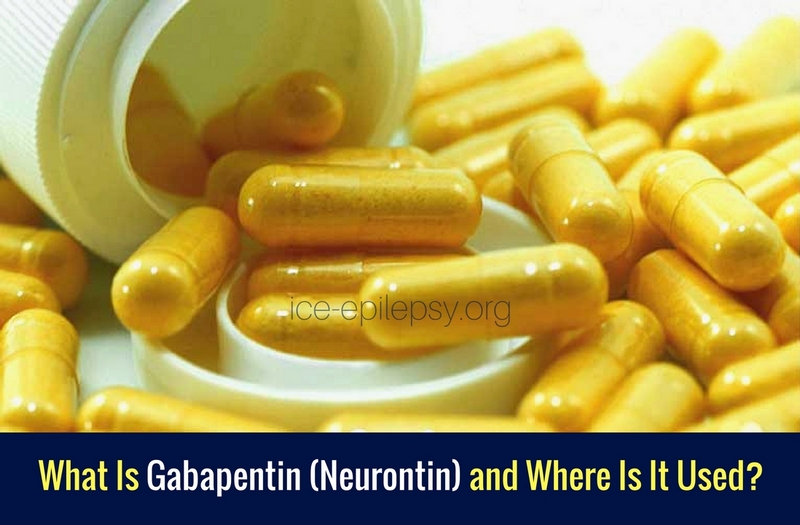 Gabapentin (Neurontin) is an anticonvulsant and antiepileptic drug used to prevent and control seizures.
Gabapentin (Neurontin) is an anticonvulsant and antiepileptic drug used to prevent and control seizures.
The drug received its name from the active component – gabapentin, which determines the mechanism of action of the drug.
The effect of this substance differs from the action of drugs that interact with GABA receptors (eg, barbirurates, valproic acid).
Gabapentin does not affect the metabolism of GABA, it reduces the number of calcium ions that cause neuropathic pain, and also reduces the death rate of a certain type of neurons, thus providing a medicinal effect on the body. Due to the properties of the active substance, Gabapentin (Neurontin) is used in epileptic seizures.
Pharmacokinetics
Gabapentin is rapidly absorbed. The maximum bioavailability (i.e. the amount of active substance that has a direct medicinal effect on the human body) is 60%. Gabapentin is not metabolized and excreted from the body in practically unchanged form with urine.
What does gabapentin look like?
The drug is released in hard gelatinous capsules, size №0, white; the contents of the capsules are white or white with a yellowish tinge powder.
- The active substance is gabapentin;
- The composition of the capsule: gelatin, titanium dioxide.
What does Gabapentin treat?
- Gabapentin is prescribed for the treatment of epilepsy, both in children and adults. The drug is used both as an independent agent and as an element of complex treatment;
- Also, gabapentin is used to treat neuropathic pain (only in people over 18 years of age).
Contraindications
- pancreatitis in acute form;
- young age (up to 3 years);
- intolerance to galactose, impaired glucose uptake, lactase deficiency;
- increased sensitivity to gabapentin or other components of the drug, as well as individual intolerance.
In addition, there are cases when the use of Gabapentin (Neurontin) is possible, but treatment should be done with caution and under the supervision of doctors:
- renal failure and some other disorders of kidney function;
- pregnancy (the effect of gabapentin on fetal development has not been sufficiently studied, so the drug can only be used if its possible benefit to the mother
- overweights the possible risk to the child);
- lactation period (the active component of the drug is able to penetrate into the composition of breast milk);
- elderly patient’s (the risk of developing kidney diseases is higher);
- the patient has mixed seizures, including absences.
Dosing and Administration
Gabapentin dosage and use should be determined by the doctor. Self-treatment is not allowed.
Gabapentin can be taken both before and after meals.
Treatment of epilepsy:
- Patients aged 12 years. Treatment starts with a minimum dosage of the drug – 300-400 mg (1st day). The daily dose increases by 300-400 mg daily for the next two days, respectively. The maximum starting dose of Gabapentin (Neurontin) can be 900 mg per day. The interval between taking gabapentin capsule should not exceed 12 hours. In general, the amount of the drug taken per day can reach 12 capsules (3600 mg of gabapentin).
- Patients younger than 12 years. Dosage is selected individually, depending on the weight of the child. On average, this is up to 35 mg per kilo. The received dose increases gradually and can reach 50 mg per day per kilo of patient weight.
Treatment of neuropathy:
- At the initial stage of treatment, the dosage of gabapentin is 900 mg per day, i.e. 300 mg 3 times a day.
- The maximum dosage of Gabapentin is 3600 mg per day.
- Pay a special attention to the choice of dosage for patients who have impaired renal function, as well as those who are on hemodialysis.
Advantages and disadvantages of Gabapentin
Advantages:
- rarely causes side effects;
- a small list of contraindications;
- the possibility of using the drug in complex therapy;
- low risk of overdose;
- relatively low price.
Disadvantages:
- the risk of developing withdrawal syndrome;
- the risk of developing a depressive state and suicidal thoughts;
- the risk of a negative effect on patients suffering from diabetes mellitus;
- may cause acute pancreatitis.
Analogs of Gabapentin: What is Neurontin?
Neurontin is an antiepileptic drug. The active ingredient of the drug is gabapentin (600-800 mg). Released in the form of tablets.
What is Neurontin used for? The application, indications, contraindications, possible side effects, and precautions are similar to Gabapentin. As a rule, this remedy is used as a component of complex therapy of epilepsy and postherpetic neuralgia.
